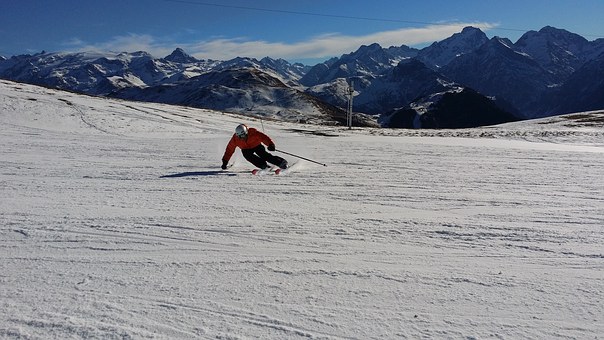Introduction
History of Hockey

The stick’s feel is its ability to translate contact with the puck and the ice to the player’s hands [2]. Players prefer the stick to be stiff and stable when handling the puck because it feels as if the puck is on their finger tips instead of at the end of a stick. If the player can properly feel the puck on the stick, they will not need to look down while stick handling, allowing them to look for a teammate to pass to, an opponent to dodge, or taking a shot (Fig. 1).
Properties of the Hockey Stick

One main property of hockey sticks that contributes to shot velocity is the flexibility or flex of the stick (Fig. 2).
Manufacturers list the flex rating on each stick that corresponds to the amount of force (in pounds-force) that it takes to deflect or bend the shaft one inch [6]. For example, it would take 85 pounds of force to bend an “85 flex” stick one inch from its original resting position. The flex ratings of hockey sticks range from 50 to 120 flex, though most players age 16 and up use sticks with either 85 or 100 flex. Flex is important because the bending of the stick is where the shot derives all of its power. When the stick is bent by the player, it is loaded with potential energy, like a spring. This energy is then transferred from the stick into the puck, resulting in a high puck velocity [7].
is used, where F is the force being applied at the center of the shaft of the stick, E is the Young’s Modulus of elasticity of the material, which depends on the type of material being used in the stick, I corresponds to the second area moment of inertia of the cross section of the shaft, δ is the deflection or amount of vertical deformation of the shaft when the force F is applied, and L is the length of the shaft [6]. Flex is especially important when attempting to maximize the velocity of a slap shot.

a) backswing, b) downswing, c) pre-loading, d) loading, e) release, f) follow-through.
In the release stage, all the potential energy that was stored in the stick due to flexing is transferred into the puck in the form of kinetic energy [8]. This is how the puck is able to fly through the air at such a high velocity. The final stage of the slap shot is the follow-through. The follow-through determines the direction that the puck will travel. If the stick follows through in an upwards direction, the puck will leave the ice and go into the air. If the follow-through is kept low, the puck will stay on the ice or fly a few inches off the ice. Players exploit the flex of the stick to fire pucks at speeds over 100 miles per hour [3].
Looking to the Future

After many years of innovation and price inflation, composite sticks still have the same life span as a wooden stick at over five times the cost. Hockey stick manufacturers have two ways to deal with this issue. They can either engineer a stick that combines the lightweight, yet flexible properties of present-day composite sticks with the durability of an aluminum stick, or they can develop new, low-cost materials that will have the same performance as composite sticks.
Conclusion
References
-
- [1] “Sher-Wood 5030SC Sr. Hockey Stick.” Internet: HockeyMonkey.com, [Apr. 04 2011].
- [2] M. Cavette. “How Hockey Stick Is Made – Material, Manufacture, Making, History, Used, Parts, Dimensions, Industry, Machine, History, Design, Raw Materials, The Manufacturing Process of Hockey Stick.” How Products Are Made. Internet: http://www.madehow.com/Volume-4/Hockey-Stick.html, 2005 [Mar. 23, 2011].
- [3] “Performance Superiority.” Easton Hockey. Internet: http://eastonhockey.com/the-difference/performance-superiority, [Apr. 04, 2011].
- [4] G.W. Marino. “Biomechanical investigations of performance characteristics of various types of ice hockey sticks”.H. J. Riehle & M. M. Vieten (Eds.), ISBS conference proceedings, 16th International Symposium . Konstanz, Germany: International Society of Biomechanics in Sports, 1998, pp. 184-187.
- [5] “Stealing Hi-Tech Hockey Sticks.” Pembroke Observer 6th ed., Nov. 25, 2003.
- [6] D. Russell & L. Hunt. “Spring Constants for Hockey Sticks.” Diss. Available: http://www.acs.psu.edu/drussell/Publications/Russell-Hunt-TPT-formatted.pdf, Kettering University: Jun. 11, 2009, [Mar. 3, 2011].
- [7] J.T. Worobets, J.C. Fairbairn, & D.J. Stefanyshyn. “The influence of shaft stiffness on potential energy and puck speed during wrist and slap shots in ice hockey.” Sports Engineering, vol. 9(4), pp. 191–200, 2006.
- [8] A. Villasenor, R.A. Turcotte, & D.J. Pearsall. “Recoil effect of the ice hockey stick during a slap shot.” Journal of Applied Biomechanics, vol. 22(5), pp. 202–211, 2006.
- [9] “Easton Stealth S19 Grip Sr. Composite Hockey Stick.” Internet: HockeyMonkey.com, [Apr. 04, 2011].
- [10] D.J. Pearsall, D. Montgomery, N. Rothsching, & R. Turcotte. “The influence of stick stiffness on the performance of ice hockey slap shots”. Sports Engineering, vol. 2(1), pp. 3–11, 1999.
- [11] D.J. Laliberte. “Biomechanics of Ice Hockey Slap Shots: Which Stick Is Best?” The Sport Journal. Available: http://www.thesportjournal.org/article/biomechanics-ice-hockey-slap-shots-which-stick-best, 2009 [Mar. 20, 2011].



